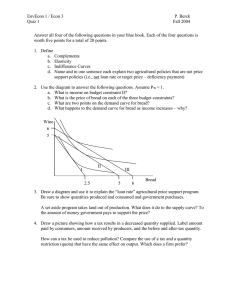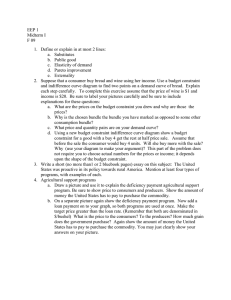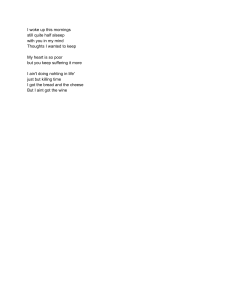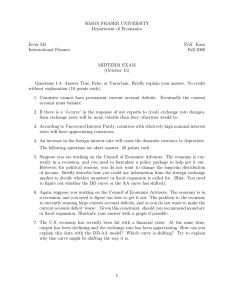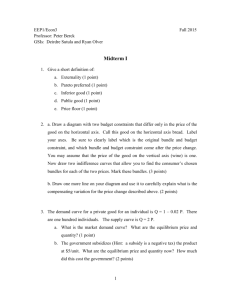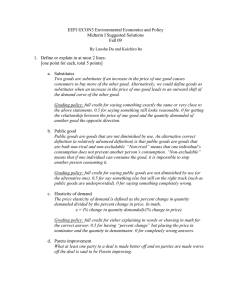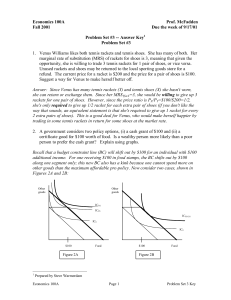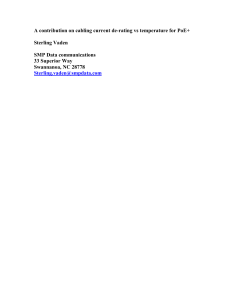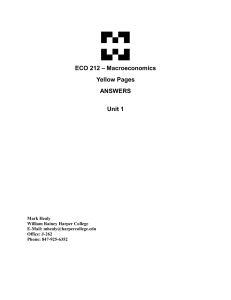QuizI 2008
advertisement
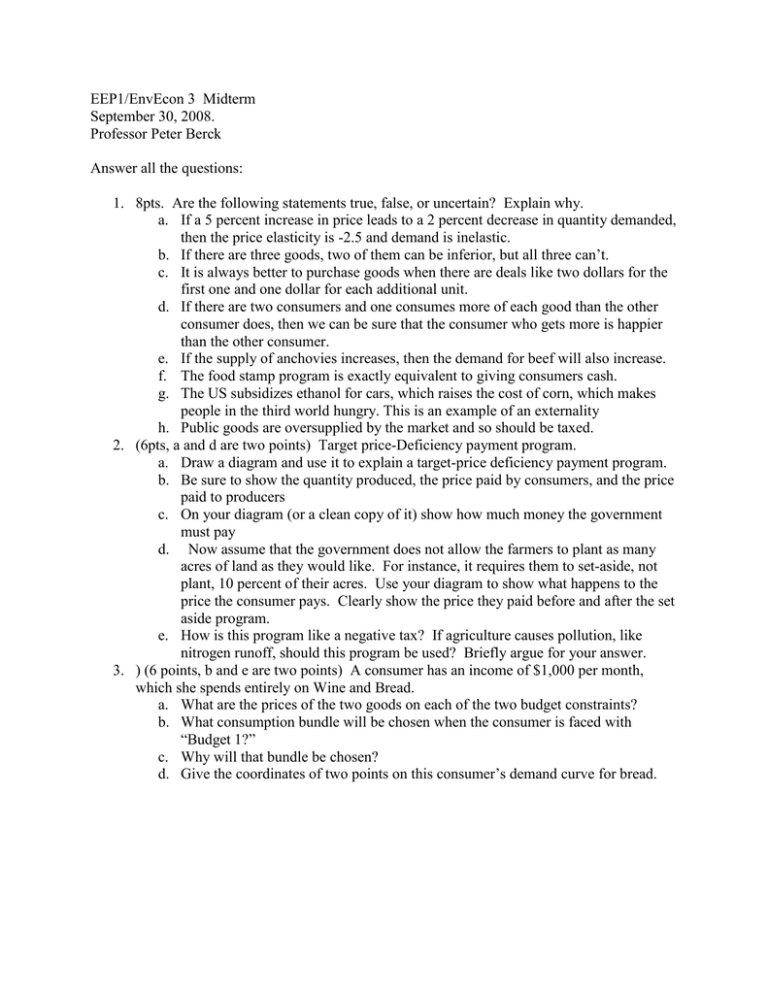
EEP1/EnvEcon 3 Midterm September 30, 2008. Professor Peter Berck Answer all the questions: 1. 8pts. Are the following statements true, false, or uncertain? Explain why. a. If a 5 percent increase in price leads to a 2 percent decrease in quantity demanded, then the price elasticity is -2.5 and demand is inelastic. b. If there are three goods, two of them can be inferior, but all three can’t. c. It is always better to purchase goods when there are deals like two dollars for the first one and one dollar for each additional unit. d. If there are two consumers and one consumes more of each good than the other consumer does, then we can be sure that the consumer who gets more is happier than the other consumer. e. If the supply of anchovies increases, then the demand for beef will also increase. f. The food stamp program is exactly equivalent to giving consumers cash. g. The US subsidizes ethanol for cars, which raises the cost of corn, which makes people in the third world hungry. This is an example of an externality h. Public goods are oversupplied by the market and so should be taxed. 2. (6pts, a and d are two points) Target price-Deficiency payment program. a. Draw a diagram and use it to explain a target-price deficiency payment program. b. Be sure to show the quantity produced, the price paid by consumers, and the price paid to producers c. On your diagram (or a clean copy of it) show how much money the government must pay d. Now assume that the government does not allow the farmers to plant as many acres of land as they would like. For instance, it requires them to set-aside, not plant, 10 percent of their acres. Use your diagram to show what happens to the price the consumer pays. Clearly show the price they paid before and after the set aside program. e. How is this program like a negative tax? If agriculture causes pollution, like nitrogen runoff, should this program be used? Briefly argue for your answer. 3. ) (6 points, b and e are two points) A consumer has an income of $1,000 per month, which she spends entirely on Wine and Bread. a. What are the prices of the two goods on each of the two budget constraints? b. What consumption bundle will be chosen when the consumer is faced with “Budget 1?” c. Why will that bundle be chosen? d. Give the coordinates of two points on this consumer’s demand curve for bread. e. Briefly describe how you would find two points on a demand curve for this consumer when the prices are the same as in part (a), but income has increased to $1,200. How would these new points relate to the previous demand curve? (You may assume that both goods are normal goods.) 60 50 Budget 2 40 Wine Budget 1 30 20 10 0 0 10 Bread 20 30
